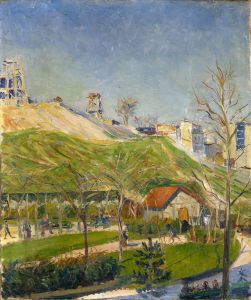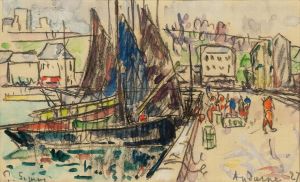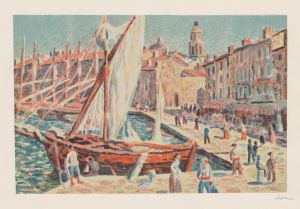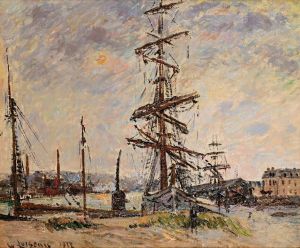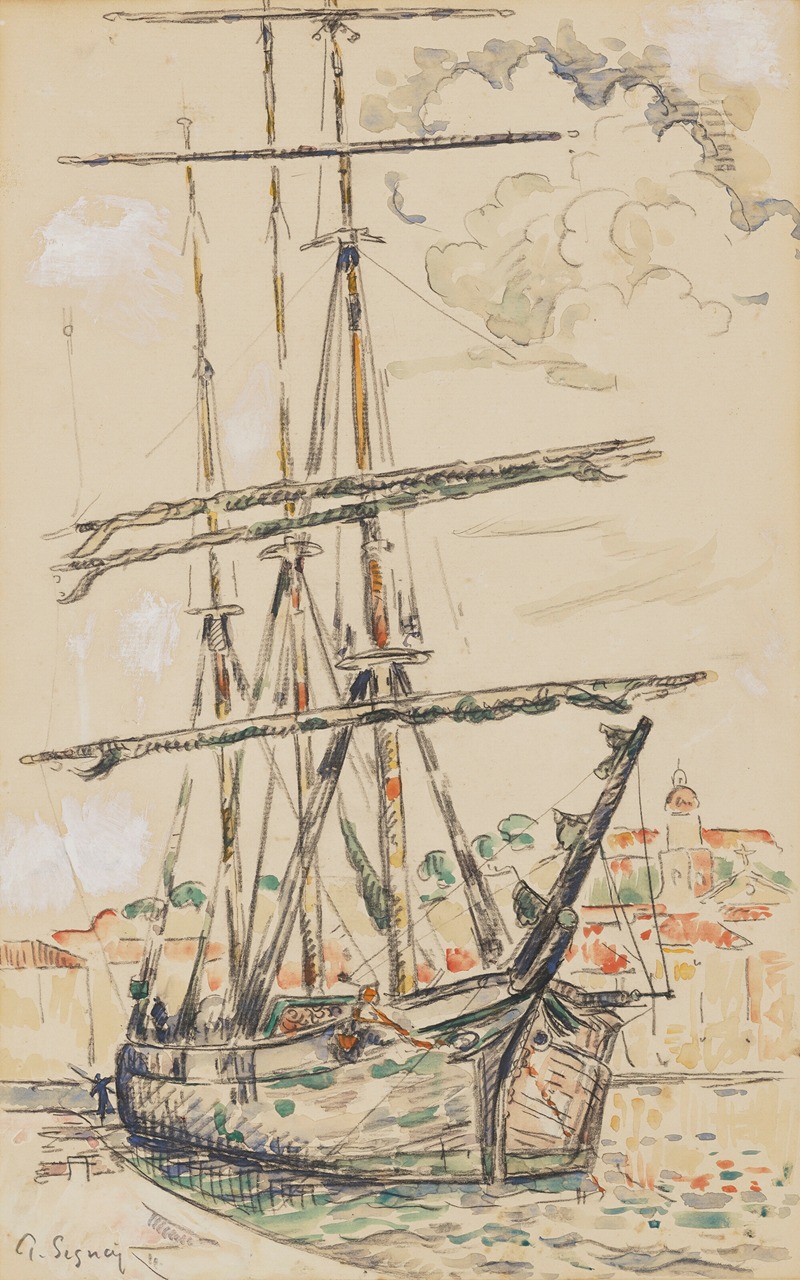
Saint-Tropez, Trois-mâts à quai
A hand-painted replica of Paul Signac’s masterpiece Saint-Tropez, Trois-mâts à quai, meticulously crafted by professional artists to capture the true essence of the original. Each piece is created with museum-quality canvas and rare mineral pigments, carefully painted by experienced artists with delicate brushstrokes and rich, layered colors to perfectly recreate the texture of the original artwork. Unlike machine-printed reproductions, this hand-painted version brings the painting to life, infused with the artist’s emotions and skill in every stroke. Whether for personal collection or home decoration, it instantly elevates the artistic atmosphere of any space.
Saint-Tropez, Trois-mâts à quai is a painting by the French artist Paul Signac, created in 1899. Signac, a prominent figure in the Neo-Impressionist movement, is known for his use of the pointillist technique, a method of painting in which small, distinct dots of color are applied in patterns to form an image. This technique was pioneered by Georges Seurat, with whom Signac worked closely in the late 19th century.
The painting depicts a harbor scene in Saint-Tropez, a small coastal town in the French Riviera. At the time, Saint-Tropez was a quiet fishing village, far removed from the glamorous reputation it would later acquire in the 20th century. The title of the painting, which translates to "Saint-Tropez, Three-Masted Ships at the Dock," reflects the subject matter: a view of the port with three-masted ships moored at the quay. The composition captures the serene atmosphere of the harbor, with its calm waters and the interplay of light and color that characterizes Signac's work.
Signac moved to Saint-Tropez in 1892, and the town became a significant source of inspiration for his art. He was captivated by the Mediterranean light and the vibrant colors of the region, which he sought to capture in his paintings. "Saint-Tropez, Trois-mâts à quai" exemplifies his mastery of color and his ability to convey the luminosity of the scene through his pointillist technique. The painting is a testament to Signac's dedication to the principles of Neo-Impressionism, emphasizing the scientific use of color theory and the optical blending of hues.
The artwork is notable for its harmonious composition and the way it balances the structural elements of the ships and the natural beauty of the surrounding environment. The use of small, precise brushstrokes creates a sense of texture and depth, while the vibrant palette evokes the warmth and brightness of the Mediterranean setting. The painting is also an example of Signac's interest in maritime themes, which recur throughout his body of work.
"Saint-Tropez, Trois-mâts à quai" is held in the collection of the Musée d'Orsay in Paris, France. The museum, which houses an extensive collection of Impressionist and Post-Impressionist art, provides a fitting context for the painting, as it represents a pivotal moment in the development of modern art. Signac's contributions to the Neo-Impressionist movement, as well as his influence on later artists, make this work an important piece in the history of art.
This painting remains a celebrated example of Signac's ability to merge scientific precision with artistic expression, capturing the essence of a specific time and place with remarkable clarity and beauty.





